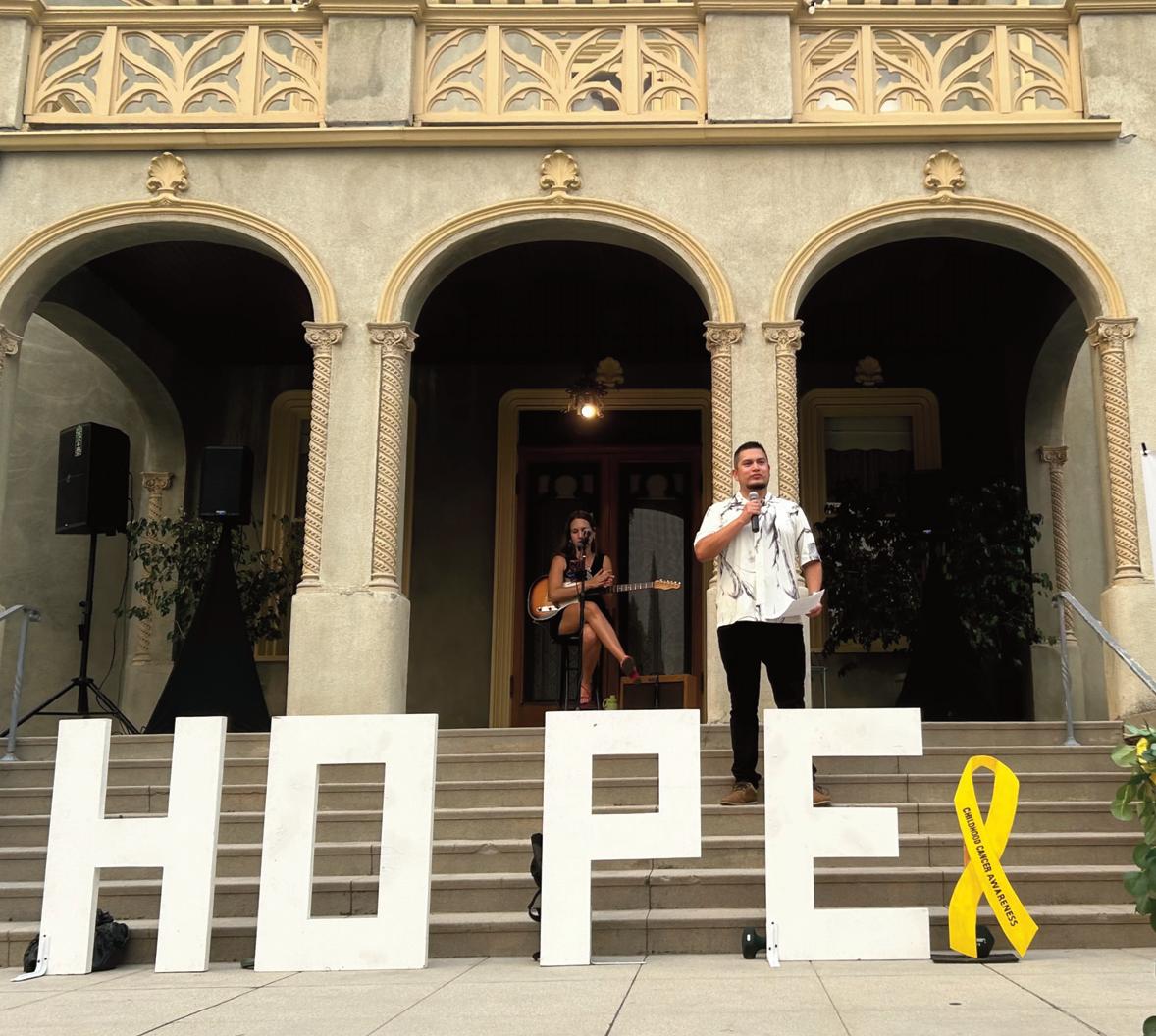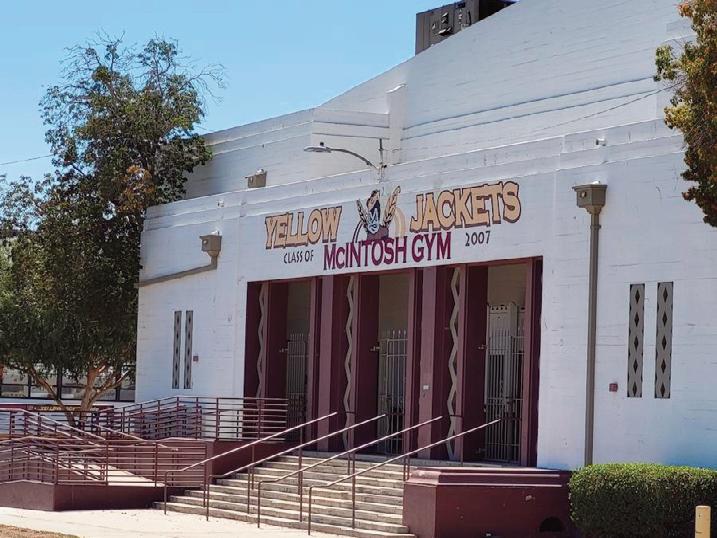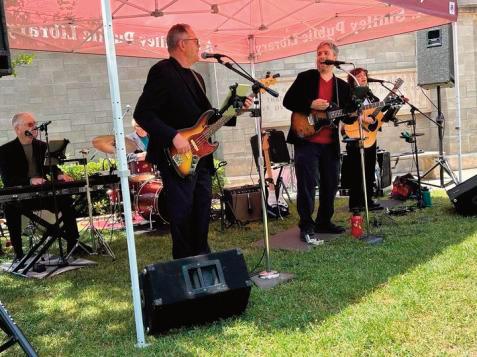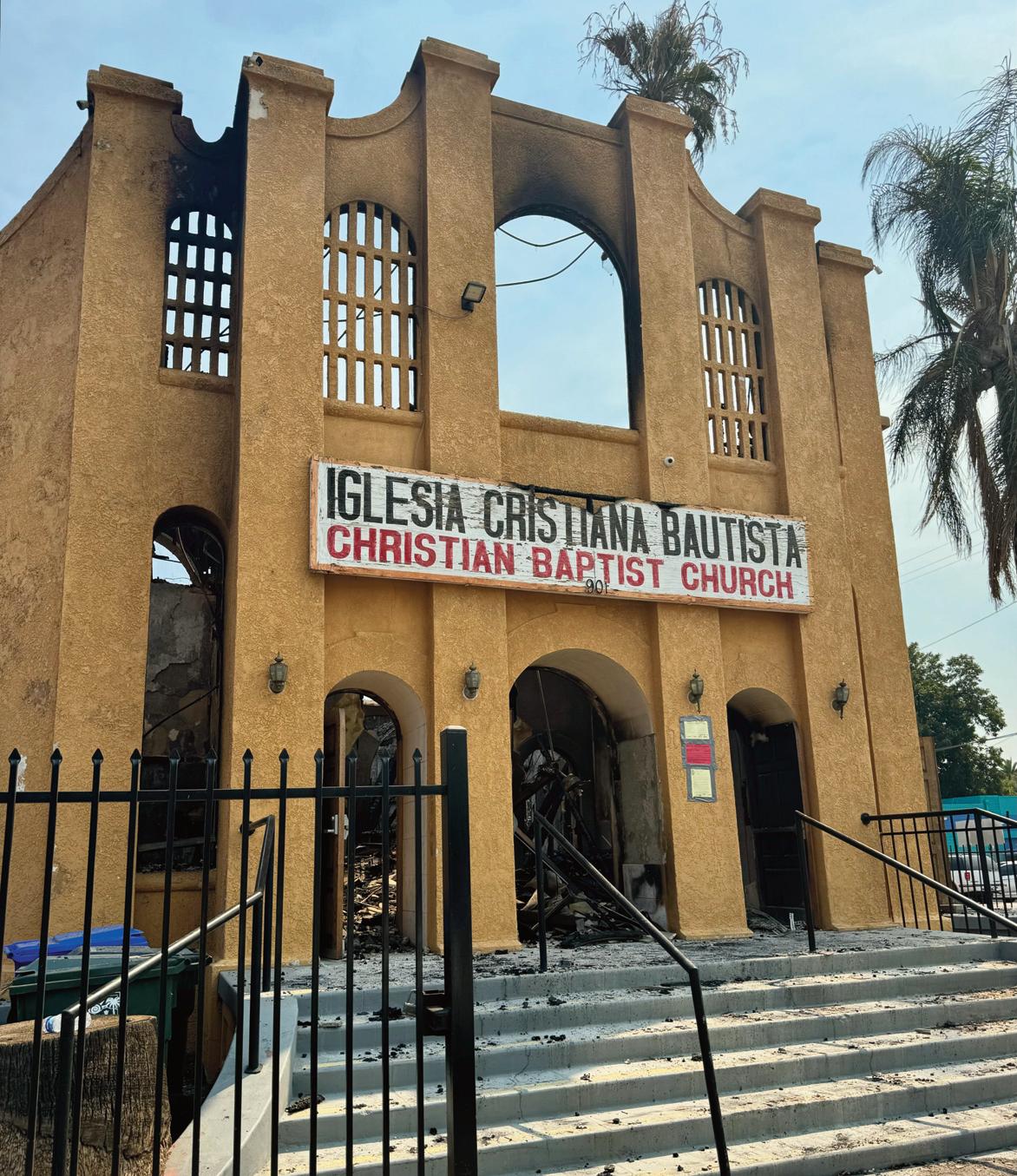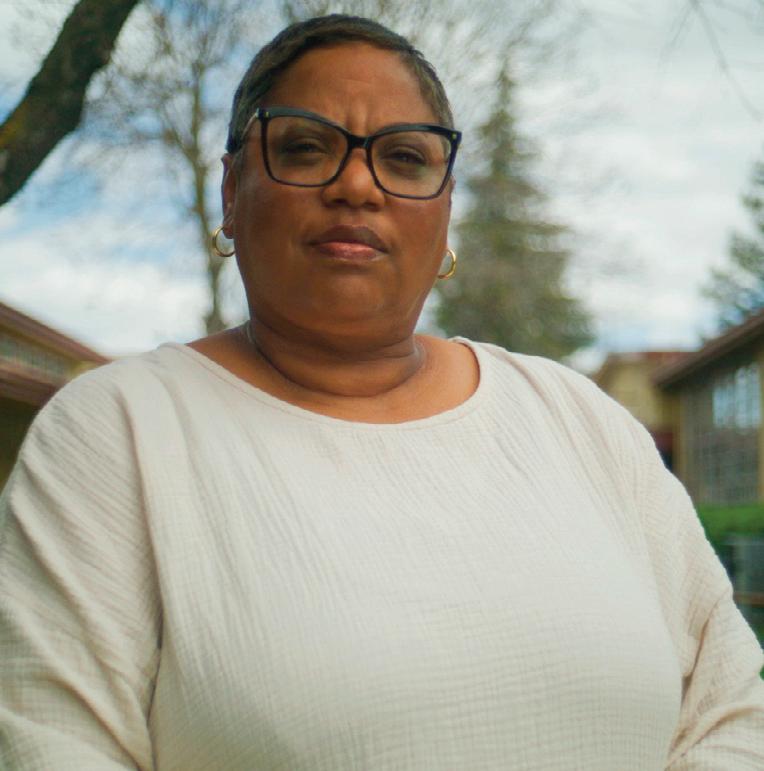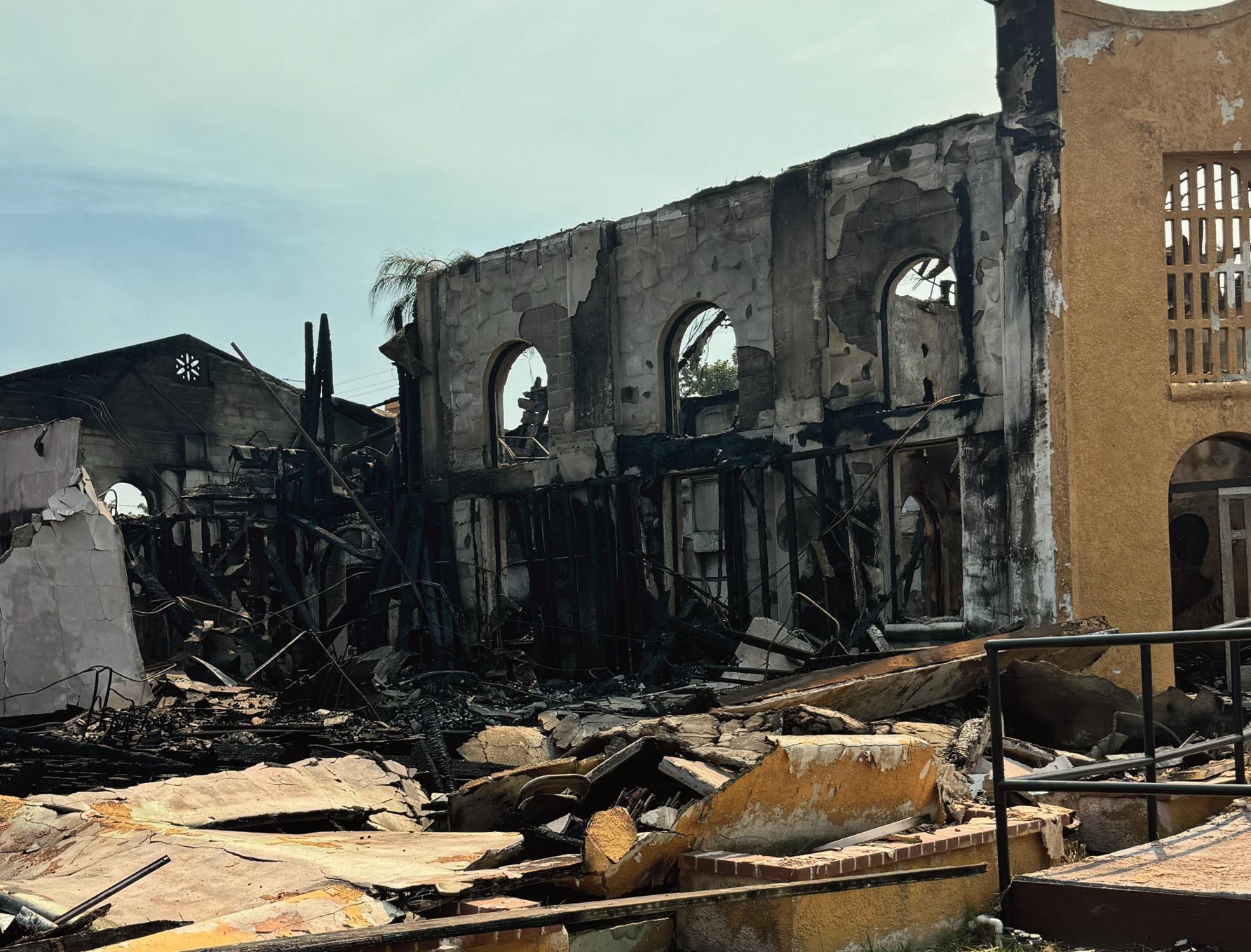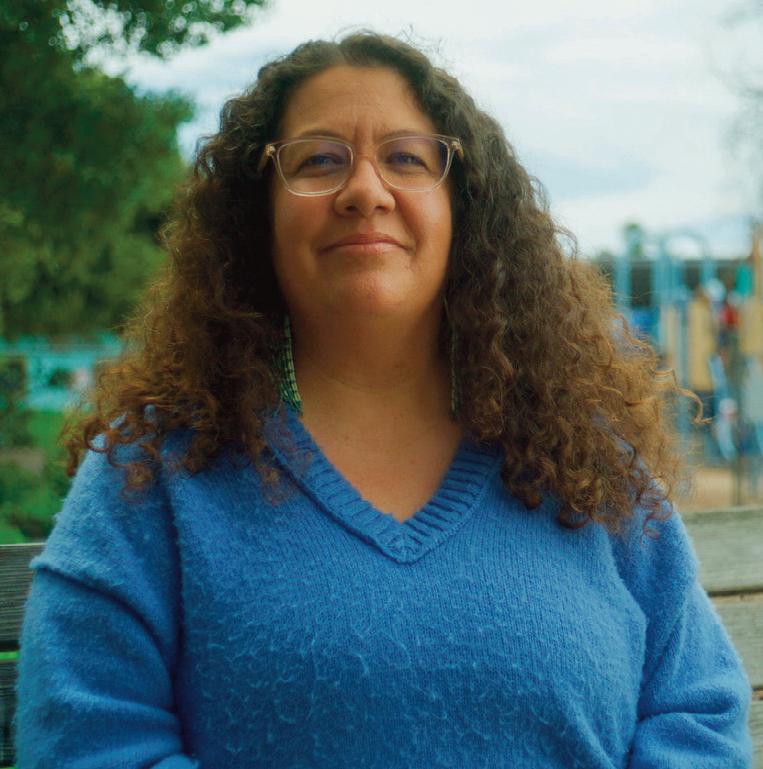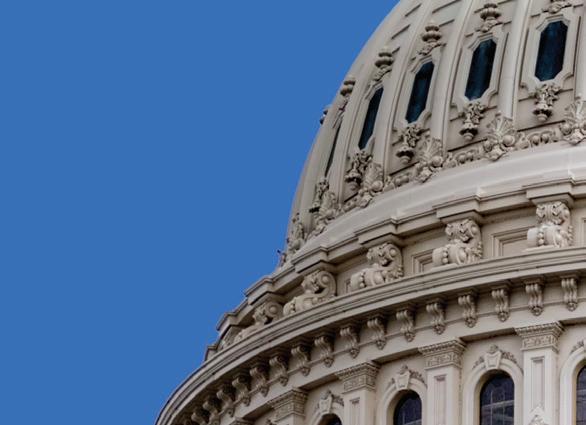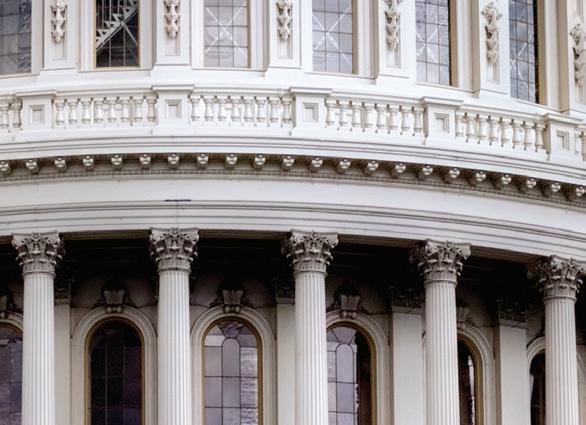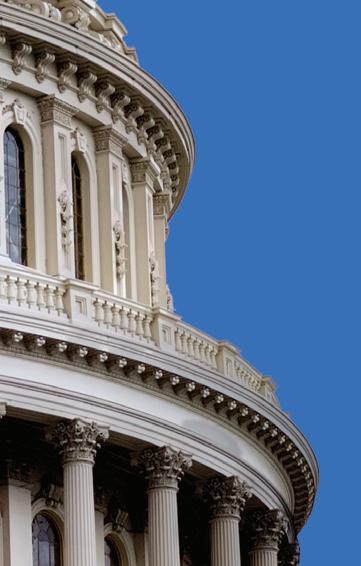R I ALTO RECORD


California’s Inland Empire is a News Mirage

September’s Fight Against Childhood Cancer: Advocating for the 16,000 U.S. Children Diagnosed Each

Three-Alarm Fire Destroys Historic San Bernardino Church, Injures One Firefighter
Inland Empire Community Newspapers
Office: (909) 381-9898
Editorial: iecn1@mac.com
Advertising: sales@iecn.com Legals : iecnlegals@hotmail.com
Rialto’s Arsenic Levels Near Legal Limit in Drinking Water: Council Challenges Veolia’s Water Safety Protocols

By Manny Sandoval
Arsenic levels in Rialto’s drinking water have raised concerns after City Well 2 registered arsenic concentrations of 9.7 parts per billion (ppb) in March 2023, just shy of the federal maximum contaminant level (MCL) of 10 ppb.
During a contentious City Council meeting, Mayor Pro Tem Ed Scott questioned Veolia, the city’s water service provider, on their
decision to keep the well operational and expressed doubts about the safety measures taken to protect the public.
“We should be looking at shutting that well down, period,” Scott asserted, after Veolia’s representative claimed that blending the water with other sources mitigated the high arsenic levels. “All that is, is dilution, and that is not acceptable.”
According to Stephen Difuccia from the
Rialto Utilities Department, arsenic was detected in the city’s annual Consumer Confidence Report, which is mandated by the Safe Drinking Water Act. This report indicated an increase in arsenic concentrations from an average of 0.52 ppb in 2020 to 6.7 ppb in 2023, with a peak reading of 9.7 ppb when Well 2 was brought back online after three months of inactivity.

By IECN Staff
TInland Empire Community Newspapers
Office: (909) 381-9898
Editorial: iecn1@mac.com
Advertising: iecn1@mac.com Legals : iecnlegals@gmail.com
he Rialto Unified School District (RUSD) has achieved top marks in the 2023-2024 California Positive Behavioral Interventions and Supports (CA PBIS) program, with Rialto High School and Rialto Middle School earning Platinum recognition, exemplifying the district's broader success of 24 school sites and a service area that received CA PBIS honors.
The recognition by CA PBIS marks a sig-
nificant achievement in the district's commitment to fostering supportive educational environments. The schools recognized include:
Platinum Level: Rialto High School, Rialto Middle School
Gold Level: Casey Elementary School, Curtis Elementary Literacy Academy, Dunn Elementary School, Garcia Elementary School, Henry Elementary VAPA School, Hughbanks Elementary School, Kelley Elementary School,
Kordyak Elementary School, Morris Elementary Environmental Literacy Academy, Jehue Middle School, Kucera Middle School
Silver Level: Early Education, Dollahan Elementary School, Morgan Elementary School, Myers Elementary School, Simpson Elementary School, Trapp Elementary School, Kolb Middle School, Carter High School, Eisenhower High School, Milor High School
Rialto Arsenic
Veolia’s defense hinged on the argument that the arsenic levels, while elevated, remained within the legal limits. A Veolia spokesperson explained that the high arsenic reading was an “anomaly” due to the well being offline for an extended period and insufficient flushing before sampling. Subsequent tests showed levels stabilizing to around 5 ppb, well below the legal threshold.
Despite these assurances, Scott pressed the issue, asking Veolia what percentage of the city’s water comes from Well 2 and why alternative water sources weren’t prioritized. Veolia failed to provide immediate answers, which only further fueled skepticism.
“Why did we not shut the well down and pump from other areas?” Scott demanded. The Veolia representative reiterated that the well’s arsenic levels had not exceeded the MCL and that shutting down Well 2 was un-
Bronze Level: Fitzgerald Elementary School, Preston Elementary School
PBIS is supported by the California Department of Education and is designed to encourage positive behavior in students through proactive strategies, such as recognition and rewards for consistently good behavior and engagement. This framework helps schools create safer, more inclusive, and effective learning environments where students can thrive academically and socially.
Following Jehue Middle School's Platinum status in 2022, this year's Platinum recognition for Rialto High and Rialto Middle highlights the district's ongoing excellence in student support and school climate. Platinum is reserved for schools that not only meet but exceed PBIS standards, demonstrating significant positive impacts on student outcomes.
“Rialto High School is very proud of this achievement
necessary, sparking further debate over the safety of the city’s water supply.
Councilmember Rafael Trujillo added to the scrutiny by raising questions about lead contamination. Veolia assured the council that Rialto’s lead levels were “non-detect across the city” and highlighted ongoing efforts to inventory and replace lead pipes in the system, with more updates expected by October 16.
Veolia’s report, detailed in the 2023 Consumer Confidence Report and PowerPoint presentation, emphasized that arsenic is a naturally occurring semi-metal found in soil, sediment, and groundwater. The company reassured residents that Well 2 water is blended with arsenic-free water from other sources, maintaining overall safety.
However, the report also acknowledged that the public health goal (PHG) for arsenic is as low as 0.004 ppb, far below the MCL of 10 ppb. While the PHG represents the safest level, achieving zero arsenic in drink-
which is nine years in the making, starting when Rialto High first became a PBIS school.” Dr. Caroline Sweeney, Rialto High School Principal, stated. “It is truly a shared achievement of our entire staff, past and present, and a testament to their hard work and dedication in helping develop and support PBIS on our campus. We have always had the singular goal of supporting the students who are part of our Knight Family.”
Just 611 schools out of the almost 10,000 schools statewide earned Platinum recognition for the 2023-2024 school year.
“We are very proud to have been awarded the highest recognition given by California PBIS - Platinum,” Rialto Middle School Principal Mr. Ricardo Garcia stated. “This award is a collective effort that started back in the 21-22 school year when we restructured how and what support we provided to our students. We rose from Silver to Gold and now finally to Platinum. Everyone at Rialto Middle School has worked very
ing water is not always feasible due to the element’s natural occurrence.
Rialto’s partnership with Veolia dates back to 2012, when the city entered into a 30-year concession agreement with Rialto Water Services (RWS) to manage water and wastewater systems and undertake significant infrastructure improvements. Veolia is responsible for delivering all water and wastewater services under this agreement.
The next quarterly arsenic sample is expected in September, with council members and residents closely watching to see if the levels remain stable or increase again.
For further information, Rialto residents can view the full Consumer Confidence Report on the city’s website or request a hard copy through their water bill.
Line Fire Burns 23,714 Acres with 5% Containment, September 9th
By Manny Sandoval
The Line Fire, which broke out at 6:00 PM on Thursday, September 5th, near Baseline Road and Aplin Street in East Highlands Ranch, has now reached 23,714 acres, with moderate growth and only 5% containment as of Monday, September 9th at 6:30 PM.
In response to the fire’s continued threat to the region, Governor Gavin Newsom declared a state of emergency on Saturday, securing federal assistance for San Bernardino County. The cause of the fire remains under investigation by Cal Fire.
Evacuations and Resources for Residents
San Bernardino County Fairgrounds, Building 6, 14800 7th St, Victorville, CA
Jesse Turner Community Center, 15556 Summit Avenue, Fontana, CA
(Note: Residents previously sheltering at Emanuel Baptist Church were relocated to this new center.)
Animal sheltering is available at the Devore Animal Shelter, 19777 Shelter Way, Devore, CA.
Road Closures:
SR-330: Closed in both directions from Highland Avenue to Live Oak. Crews are active in the area, and no reopening estimate is available.
hard to make sure we have fidelity in providing students with the support they need. We make sure to provide time and a place for the whole faculty to meet at least once a month to talk about the supports that some of our students need and to praise those who are doing well. It has been a collective effort that has not just earned us recognition, but it is changing the school culture that has made Rialto Middle School a fantastic school for everyone, and especially for our students.”
With Jehue Middle School previously setting a high standard, Rialto High and Rialto Middle School's recent success further underscores RUSD's leadership in implementing effective strategies that support student success.
RUSD remains dedicated to leading by example in the PBIS framework, continually focusing on promoting environments where every student has the opportunity to succeed, supported by a community committed to their well-being and future.

As of September 9th, 36,328 structures have been threatened, and mandatory evacuation orders are still in effect for several areas. The San Bernardino County Sheriff’s Department has urged residents to leave immediately due to the life-threatening danger posed by the fire. The most recent evacuation orders and warnings are as follows:
Mandatory Evacuation Orders (Newest First):
Communities of Angelus Oaks, Seven Oaks, all campgrounds, and cabins in the area
The community of Forest Falls
Mountain Home Village East of Orchard Road to Cloverhill, from Highland Avenue north to the foothills Calle Del Rio to Hwy 38, including Greenspot Road North All underdeveloped land east of Highway 330 to Summertrail Place, north of Highland Avenue
Running Springs and Arrow Bear Lake (east of Highway 330 and south of Highway 18)
Evacuation Warnings (Newest First):
Big Bear Valley from the dam to Cactus Road
Green Valley Lake north of Highway 18
Cedar Glen, Lake Arrowhead, Crestline, Valley of Enchantment
Garnet Street to Bryant Street and Carter Street north to Mill Creek
Residents in areas under evacuation warnings are advised to prepare to leave quickly if the situation worsens. Those needing additional time to evacuate, as well as residents with pets or livestock, should leave now.
Evacuation Shelters have been set up at the following locations:
SR-18: Closed from Kuffle Canyon to Big Bear Dam in both directions. Evacuees may leave, but no inbound traffic is allowed.
SR-38: Closed in both directions from Bryant to Lake Williams due to fire spread. Evacuations are underway. For real-time updates on road closures, visit the California Highway Information website. Smoke Impacts and Air Quality
With increased fire activity, smoke remains a serious concern for surrounding areas. The People's Collective for Environmental Justice recommends residents take the following actions to reduce smoke exposure:
Reduce exposure by keeping doors and windows closed. Avoid burning indoors, including candles and wood. Wear an appropriate mask, such as an N95 or P100 respirator, if going outside. Check air quality regularly using airnow.gov or your local weather app.
Unified Command and Fire Response Efforts
The Line Fire is being managed under unified command by the CAL FIRE San Bernardino-Inyo-Mono Unit, the City of Highland, the San Bernardino National Forest, the San Bernardino County Fire Protection District, and the San Bernardino Sheriff’s Department.
While no structures have been destroyed, three firefighters have been injured since the fire’s inception. The fire remains active in the upper elevations, particularly in thermal belts, where short runs on slopes and dry vegetation continue to fuel its growth. However, fire crews have worked relentlessly to slow the blaze, supported by 1,855 personnel who have been assigned to the incident.
Full article at IECN.com.
California’s Inland Empire is a News Mirage. Grassroots Collaborations, Philanthropic Investment, and Smart Public Policy Could Help Change That.
By Dr. Thomas F. Corrigan, Inland Empire MediaWatch
The San Bernardino Sun is the paper of record for San Bernardino, California—a city of more than 220,000 in the state’s diverse and rapidly growing Inland Empire region (or “the IE”).
This Wednesday morning—August 28, 2024—the Sun published front-page articles about special counsel Jack Smith’s revised indictment of former president Trump, the rescue of an Israeli hostage in Gaza, vice presidential nominee J.D. Vance’s upcoming Southern California campaign stops, and Meta CEO Mark Zuckerberg’s claims that the Biden Administration pressured Facebook to censor some Covid19 content during the pandemic.
That same day, twenty minutes south of San Bernardino, Riverside’s Press-Enterprise published a front page that was identical to the Sun’s. The two papers’ headlines, bylines, articles, photos, and layout were all exactly the same. All that differed were the mastheads. Two other area dailies—the Ontario-based Inland Valley Daily Bulletin and Redlands Daily Facts—published the exact same front pages, too.
In fact, each day these four Inland Empire dailies publish entirely duplicative newspapers from cover-to-cover, including the same sections, articles, headlines, photos, advertisements, and even obituaries! So, when residents open their “local” daily (or its website), they must wade through coverage of other cities and towns across the massive two-county region—if their community is covered at all. Indeed, Wednesday's print edition of the San Bernardino Sun didn’t once mention San Bernardino or the surrounding cities of Rialto, Colton, Fontana, or Highland.
Why is this happening? Over the past two decades, U.S. newspapers have seen their advertising revenues evaporate, as Google and Facebook have cornered the digital advertising market. As a result, a third of U.S. newspapers have closed, and two-thirds of newspaper journalists’ jobs have been eliminated. So, local newspapers (and ad-supported outlets more generally) must do more with less, or they simply do less.
But in California’s Inland Empire, there’s an added problem: these duplicative dailies are all part of Southern California News Group (SCNG), which is owned by the “vulture” hedge fund Alden Global Capital. The nation’s third-largest newspaper owner, Alden is notorious for buying local papers, gutting editorial staffs, and siphoning off the remaining profits.
In 2018, SCNG executive editor Frank Pine said his newsrooms’ staffs had been halved in just two years under Alden. He called SCNG’s business model “broken” and even suggested their papers transition to non-profit status. That hasn’t happened. Instead, Alden passes off a single regional newspaper as four local
ones, and most IE residents are none the wiser.
A news desert? Or a news mirage?
In recent years, much of the academic and public dialog concerning the crisis in local journalism has focused on “news deserts”—areas with “no, or very limited, access to a reliable local news source—either print, digital or broadcast.” In her 2023 report, The State of Local News, Northwestern University’s Dr. Penny Abernathy identified 204 U.S. counties without any local news outlets and another 1,562 with just one.
In California's Inland Empire, the problem isn't so much a lack of news outlets, though. (Abernathy’s report identified 48 news providers across San Bernardino and Riverside counties, and Mapping Black California locates even more media outlets, generally). Rather, the problem is that many Inland Empire news outlets publish little, if any, substantive local journalism. And as Alden's duplicative dailies illustrate, this is not always apparent to news consumers.
I've argued that Calfifornia’s Inland Empire is a “news mirage”—an area that appears to have more substantive local journalism than it actually does. Other journalists and researchers have also used the “mirage” metaphor to describe troubling local news dynamics, including Chevron’s surreptitious ownership of a northern California daily, rural weeklies that employ few if any local reporters, and the rapid proliferation of AI-generated mis- and disinformation.
The Inland Empire news mirage is multifaceted, and it extends well beyond Alden’s duplicative dailies. As we’ll see, the IE has no dedicated, local TV news. Instead, L.A. stations pipe in our “local” newscasts, which portray the region as a crime scene. Under-resourced local weeklies and digital sites also rely heavily on “churnalism”—the passing along of press releases and other pre-packaged content as news. This enables powerful local actors like Amazon to manipulate public opinion. Meanwhile, popular social media accounts and “pink slime” websites engage in sensationalism and spread misand disinformation.
As a result, IE communities— which are majority-Latino and where 36% of families cannot meet basic needs—face a dearth of reliable information on pressing local issues, such as warehouse sprawl, housing unaffordability and homelessness, food insecurity, health and environmental injustice, and right-wing extremism. Moreover, law enforcement, public officials, and major corporations like Amazon operate without the sort of close journalistic scrutiny that local democracy requires.
There are reasons to be optimistic about IE journalism, though. A grassroots network of ethnic and community media is innovating with cooperative journalistic approaches to inform and empower local communities. The
region’s community foundation has launched a Journalism Innovation Hub+Fund to support those grassroots efforts, and that Hub has linked up with the Press Forward national philanthropic coalition. Finally, the California legislature recently considered two bills that would have had the tech giants pay to restore local journalism, though a recent deal with Google seems to have significantly dampened those efforts.
Whether grassroots collaborations, philanthropic initiatives, and (smart) public policy interventions are successful will determine, to no small degree, whether Inland Empire communities have the news and information needed to grow sustainably, equitably, and democratically. Otherwise, the region will continue to operate with a news ecosystem that, because of its lack of substantive local reporting, enables corruption, racial and economic inequality, and health and environmental degradation. But, first, we must recognize the region for what it is—a news mirage.
A multifaceted mirage Alden’s duplicative dailies are the most galling manifestation of the Inland Empire news mirage, but they are not the only contributor. Flip on a television in the IE, and you’ll find newscasts from the typical local TV affiliates— ABC, NBC, CBS, Fox, and Telemundo. However, except for the relatively tiny Palm Springs market, none of those stations are based in the Inland Empire. Instead, the region’s “local” newscasts are piped in from Los Angeles, and when they do cover the IE, it is almost exclusively violent crime stories.
At 4.7 million residents, the Inland Empire is the nation’s 12th largest metropolitan statistical area, it has the fifth largest Latino population, and the region is projected to grow twice as fast as the rest of Southern California over the next 25 years. Shouldn’t such a large, diverse, and rapidly growing region have its own, dedicated TV stations and newscasts?
Meanwhile, many local weeklies and digital news sites rely heavily on “churnalism”—the passing along of police reports, press releases, and other prepackaged content as news. Churnalism is cost-effective, and it may well satisfy some readers’ wants. Crime gets lots of clicks, while press releases touting area businesses and non-profits provide a steady, compensatory stream of “good news” (something residents have said they desperately need).
However, churnalism also skews news coverage toward relatively low-value stories, and it cedes editorial influence to the very institutions journalists should hold accountable, including corporations, law enforcement, and public officials. As Orwell famously said, “Journalism is printing something that someone else does not want printed; everything else is public relations.”
This has real consequences for Inland Empire communities. A December 2023 document leak revealed that Amazon—the IE’s largest private employer—was (and presumably still is) engaged in a “corporate manipulation” campaign aimed at stifling community opposition to its warehouse sprawl, labor practices, and health and environmental impacts in the region. The campaign includes such tactics as “strategic donations, currying favor with local politicians, [and] methods of cultivating allies and placing of ‘Amazonians’ within community groups and local boards like sleeper spies.”
Amazon’s PR team can’t execute this corporate manipulation campaign on its own, though. It needs local media to pass along its friend-of-the-community press releases as news, and many IE outlets—time- and resourcestrapped as they are—have enabled that campaign.
Recent newspaper ownership changes threaten to make matters worse. This summer, Arizonabased Times Media Group (TMG) acquired four locally owned IE weeklies and promptly laid off three of those papers’ editors, including the 30-year editor of the Fontana Herald News. TMG has also curtailed community freelance contributions. Apparently the $35 per article freelance rate was cost prohibitive.
Now, the editor at the Yucaipa/Calimesa News Mirror works double-duty at the Redlands Community News, the Fontana Herald News and Banning/Beaumont Record Gazette are produced by TMG's Arizonabased staff, and the company is closing three of its four local offices. Meanwhile, these papers all use the slogan, “Your Community, Your Newspaper.” Just don't try to find them at the office.
Sensationalism, misinformation, and “pink slime”
Like nature, information abhors a vacuum, and some of the sources that have emerged to fill the Inland Empire’s local news void practice journalism that is questionable at best.
On social media, a slew of newsy accounts like Inland Wire, Inland Empire Pages, What’s Up With Riverside and onthetira (aka Foo News Network) have amassed followings in the hundreds of thousands. These accounts produce mostly sponsored content for local businesses. However, they also plug area events, share community-sourced videos, and some even publish on-the-ground reporting. Unfortunately, much of their local news coverage is sensational crime reports and vehicle accidents that, while eye-popping, does little to inform civic or democratic life. They also rely heavily on churnalism, and some even repackage other area news sources’ reporting without attribution.
Some of these popular accounts have also published blatant misinformation. For instance, on June 24, 2024, Inland Empire Pages shared with its (then) 237,000 Instagram followers an
unattributed, grammatically-challenged Facebook post. It read:
Sex trafficking ring busted in the old FALLAS building [in Highland, California]. 60 women and children taken in a box truck. They were then taking by Ice. The men arrested driving the truck had ms13 tattoos.
Over the post, in large bold letters, Inland Empire Pages asked a rhetorical question: “Why isn’t this all over the news?” The answer was quite simple: the sex trafficking story wasn’t true. There had been a cartel-related bust in Highland, but, as the San Bernardino Police Department confirmed, “there were no trafficked women or children involved.”
Several commenters (including myself) raised alarms about this misinformation. However, Inland Empire Pages did not remove the post or offer a proper correction, and over the following days the post went on to rack up more than 700,000 views, 12,000 likes, and 30,000 shares. Since then, Inland Empire Pages has added an additional twenty thousand followers.
Other Inland Empire “news sources” are designed to deceive. The company Metric Media operates 75 “local news” websites across California that purport to “fill the void in community news” by “provid[ing] objective, data-driven information without political bias.” In the Inland Empire, Metric Media’s sites include Coachella Today, Pomona Valley Today, NW and SW Riverside News, Victor Valley Times, and East and West SBV Times in the San Bernardino Valley.
These outlets look and sound like legitimate local news sources, but they are what journalism analysts refer to as “pink slime” websites. Playing on the public’s trust in and demand for local news, these operations churn out a mix of low-value, AIgenerated stories, byline free press releases, and a slew of right-wing propaganda.
For instance, on July 24, 2024, East SBV Times published a misleading story stating that local Democratic Congressman Pete Aguilar (CA-33) had voted “to make it easier for illegal aliens to vote in federal elections.” In fact, non-citizen voting is a ginned up problem, and bills like the one in question—the SAVE Act—would make it harder for citizens to vote, particularly young people and people of color.
But the East SBV Times report about Aguilar wasn’t a one-off story; it was part of a national propaganda campaign. For, on that same day, Metric Media ran the exact same story about Pomona Congresswoman Norma Torres and scores of other Democratic Representatives across the country. Metric Media simply swapped out the names and photos to fit their 1000+ local outlets.
Read the full article at IECN.com.
*Originally published in the MediaWatch newsletter.

